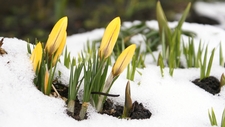Seasons

TEKS Objective
The student is expected to identify characteristics of the seasons of the year and day and night.
Essential Understanding
The student knows that the natural world includes the air around us and objects in the sky.
Science Background
Seasons of the Year: NASA (website) – Explanations of the causes and characteristics of Earth’s seasons.
Seasons of the Year
NASA, Goddard Space Filght Center, www-istp.gsfc.nasa.gov
Signature Lesson
What’s the Season? Science NetLinks (website) - Students identify the seasonal patterns in temperature and precipitation.
What’s the Season?
Science NetLinks, www.sciencenetlinks.com
- Supporting Lessons
- Extensions
- Assessment Ideas
- Literature Connections
- Related
TEKS - Additional Resources
Supporting Lessons
The Mystery of the Missing Hummingbirds: The Globe Program (website) - Join Simon, Anita, Dennis and the rest of Ms. Patel’s class as they investigate where the hummingbirds have gone and when they might return. This module on seasons contains a storybook and learning activities.
The Mystery of the Missing Hummingbirds
The Globe Program, globe.gov
Elaboration Lessons and Extensions
Connecting Kids to Nature: Project Learning Tree (PDF) - Observe the annual signs of seasonal change and investigate why the leaves of deciduous trees change color in the Fall.
Connecting Kids to Nature
Project Learning Tree, www.plt.org
Assessment Ideas
Obtain pictures representing each of the four seasons. Have students identify and label the seasons, and verbally describe the characteristics of each.
Next, have students fold a sheet of paper into four equal parts and label each segment with the name of a season. Instruct students to draw an apple tree in each part to show changes undergone by the tree as the seasons change.
Literature Connections
The Seasons of Arnold’s Apple Tree. Gibbons, Gail (ISBN: 0152712453)
A Tree for All Seasons. Bernard, Robin (ISBN: 0792266749)
Spring. Hirschi, Ron (ISBN: 0140557865)
Summer (the Seasons). Roca, Nuria (ISBN: 0764127357)
When Autumn Comes. Maass, Robert (ISBN: 0805023496)
When Winter Comes. Maass, Robert (ISBN: 0805049266)
Additional Resources
Seasons Lesson: Instructor Web (website) - An elementary science lesson on the four seasons, including printable teaching worksheets.
TEKS Navigation
Grade 1
Need Assistance?
If you need help or have a question please use the links below to help resolve your problem.

Comments